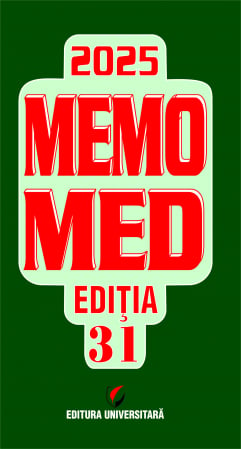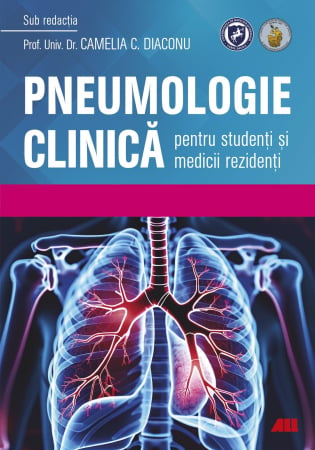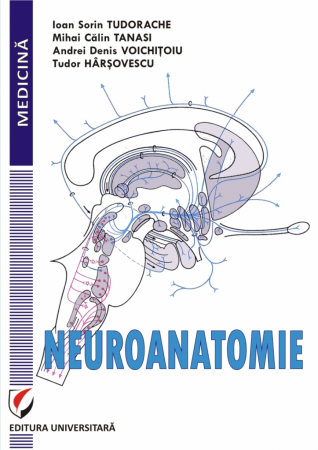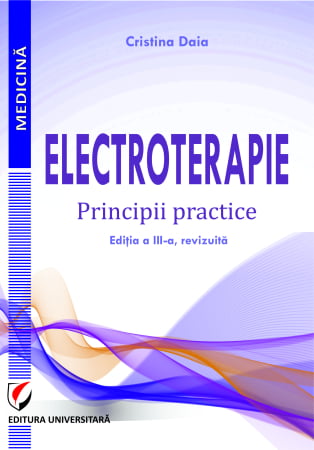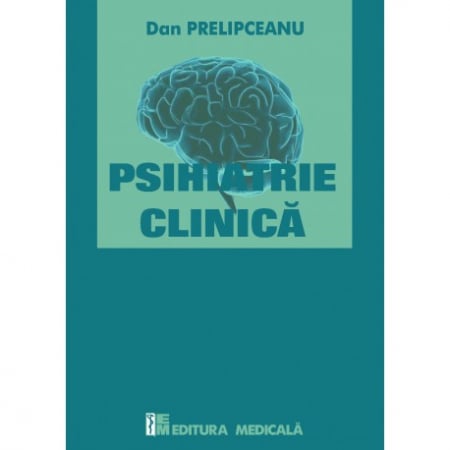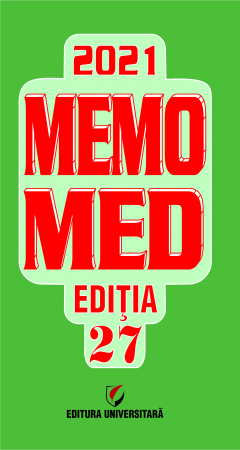Manuscript proposals: [email protected] / 0745 204 115 //// Tracking orders Individuals / Sales: 0745 200 357 / Orders Legal entities: 0721 722 783
Publisher: Editura Universitară
Author: Arina Cipriana Trifu
ISBN: https://doi.org/978-606-28-1329-1
DOI: 10.5682/9786062813291
Publisher year: 2021
Edition: I
Pages: 184
Product Code:
9786062813291
Do you need help?
0745 200 357
- Description
- Download (1)
- Authors
- Content
- More details
- Reviews (0)
The Hikikomori phenomenon is widespread in modern society. Disguised, argued, "hidden" or "invested" in other words with less pathological significance, it is a reality today. For Western psychiatrists it is a clinical reality. For Eastern psychiatry - an existential reality. Like anxiety, which varies throughout a vast pleiad, between its social aspects and those at the extreme of destructive anxieties.
This book sweeps the beach of the suffering of these young people from introversion, social isolation, building their own world with rules, norms and particular joys to depression, alexithymia, the absence of any desire to find feelings of fullness. Life acquires new meanings, with refuge in idealizations - sometimes childish, sometimes of soul and moral absenteeism - diffuse identity. When the dissolution of the Ego leads to the fusion with the universe, when the negative phenomenology amplifies or the bulimic impulses take forms that affect the corporality - in the attempt of self-protection -, we approach various psychiatric diagnoses, in various taxonomies.
Japanese psychiatry advocates for social and understanding of cultural patterns, for the normality of online interaction, where technology and technology acquire particular meanings, in accordance with the informational upgrades that come to us with lightning speed. There is a category of young people who do not know how to revolt, but they know how to build their own worlds, in which the exhaustive is in introversion, in mirrors in which the Ego transforms into what it wants to be. Psychosocial interventions and the effort of Japanese parents to understand these children is impressive, through the force with which unconditional love and acceptance, along with the Winnicotian concept of being a good enough parent, demonstrates how the interference of a positive environment has viable chances to it counteracts the trans-generational transmission of a "genetic evil", which psychiatry transposes into diagnostic patterns and refers to a loaded heredity.
In other words, Glen O. Gabbard's conception is reconfirmed, according to which, psychotherapy modifies and transforms the functioning of the brain. We plead for a living world, similar to the symbols with open doors, through which those with hikikomori can walk freely, in search of the meaning of their own being and being.
Daniela Irimia, psychoanalyst
Full member IPA
This book sweeps the beach of the suffering of these young people from introversion, social isolation, building their own world with rules, norms and particular joys to depression, alexithymia, the absence of any desire to find feelings of fullness. Life acquires new meanings, with refuge in idealizations - sometimes childish, sometimes of soul and moral absenteeism - diffuse identity. When the dissolution of the Ego leads to the fusion with the universe, when the negative phenomenology amplifies or the bulimic impulses take forms that affect the corporality - in the attempt of self-protection -, we approach various psychiatric diagnoses, in various taxonomies.
Japanese psychiatry advocates for social and understanding of cultural patterns, for the normality of online interaction, where technology and technology acquire particular meanings, in accordance with the informational upgrades that come to us with lightning speed. There is a category of young people who do not know how to revolt, but they know how to build their own worlds, in which the exhaustive is in introversion, in mirrors in which the Ego transforms into what it wants to be. Psychosocial interventions and the effort of Japanese parents to understand these children is impressive, through the force with which unconditional love and acceptance, along with the Winnicotian concept of being a good enough parent, demonstrates how the interference of a positive environment has viable chances to it counteracts the trans-generational transmission of a "genetic evil", which psychiatry transposes into diagnostic patterns and refers to a loaded heredity.
In other words, Glen O. Gabbard's conception is reconfirmed, according to which, psychotherapy modifies and transforms the functioning of the brain. We plead for a living world, similar to the symbols with open doors, through which those with hikikomori can walk freely, in search of the meaning of their own being and being.
Daniela Irimia, psychoanalyst
Full member IPA
-
The Hikikomori phenomenon. From syndrome to clinical disease
Download
ARINA CIPRIANA TRIFU
6th year student, Medical-Military Institute
He graduated from the National College of Informatics "Tudor Vianu" - 2016
Graduate of the Faculty of Foreign Languages, Japanese - English Department, University of Bucharest - 2019.
Master in East Asian Studies - Faculty of Foreign Languages, University of Bucharest - 2021.
Master in the Faculty of Psychology and Educational Sciences, University of Bucharest - 2021.
Concern:
Japanese language and culture, psychiatry, world health security systems, infectious diseases;
climbing skills (multiple national champion and Balkan podium);
advanced interest in the area of clinical psychology, psychiatry and psychodiagnosis (development of dual thinking - diagnostic tree, medical decision and longitudinal psychotherapeutic perspective);
experiential psychology skills (participating in pair exercise groups) - for self-knowledge, understanding the other's perspective, increasing insight and empathy, developing transfer and countertransference skills;
Participation in multiple scientific events in the field of psychiatry, focus on anamnesis, clinical interview on patients with major diagnoses in psychiatry, differential diagnosis.
6th year student, Medical-Military Institute
He graduated from the National College of Informatics "Tudor Vianu" - 2016
Graduate of the Faculty of Foreign Languages, Japanese - English Department, University of Bucharest - 2019.
Master in East Asian Studies - Faculty of Foreign Languages, University of Bucharest - 2021.
Master in the Faculty of Psychology and Educational Sciences, University of Bucharest - 2021.
Concern:
Japanese language and culture, psychiatry, world health security systems, infectious diseases;
climbing skills (multiple national champion and Balkan podium);
advanced interest in the area of clinical psychology, psychiatry and psychodiagnosis (development of dual thinking - diagnostic tree, medical decision and longitudinal psychotherapeutic perspective);
experiential psychology skills (participating in pair exercise groups) - for self-knowledge, understanding the other's perspective, increasing insight and empathy, developing transfer and countertransference skills;
Participation in multiple scientific events in the field of psychiatry, focus on anamnesis, clinical interview on patients with major diagnoses in psychiatry, differential diagnosis.
PREFACE TO A BOOK WITH UNUSUAL CONTENT / 7
PREAMBLE / 13
CHAPTER 1
INTRODUCTORY NOTIONS / 15
CHAPTER 2
LEVELS OF MENTAL FUNCTIONING OF PATIENTS IN WESTERN PSYCHIATRY / 32
CHAPTER 3
UNDERLYING UNUSED PSYCHANALYTICAL THEORIES EXPLANATORYLY USED IN ORIENTAL PSYCHOPATHOLOGY / 79
CHAPTER 4
PSYCHOPATHOLOGY AND WESTERN PSYCHIATRIC DISORDERS NOT FOUND IN THE EXPRESSION OF THE HIKIKOMORI CONCEPT / 89
CHAPTER 5
EVALUATION PARALLELS / 97
CHAPTER 6
CONCLUSIONS RELATED TO THE HIKIKOMORI CONCEPT / 116
ANNEX 1/144
ANNEX 2/149
ANNEX 3/152
ANNEX 4/158
ANNEX 5/162
AFTERNOON / 165
BIBLIOGRAPHY / 166
PREAMBLE / 13
CHAPTER 1
INTRODUCTORY NOTIONS / 15
CHAPTER 2
LEVELS OF MENTAL FUNCTIONING OF PATIENTS IN WESTERN PSYCHIATRY / 32
CHAPTER 3
UNDERLYING UNUSED PSYCHANALYTICAL THEORIES EXPLANATORYLY USED IN ORIENTAL PSYCHOPATHOLOGY / 79
CHAPTER 4
PSYCHOPATHOLOGY AND WESTERN PSYCHIATRIC DISORDERS NOT FOUND IN THE EXPRESSION OF THE HIKIKOMORI CONCEPT / 89
CHAPTER 5
EVALUATION PARALLELS / 97
CHAPTER 6
CONCLUSIONS RELATED TO THE HIKIKOMORI CONCEPT / 116
ANNEX 1/144
ANNEX 2/149
ANNEX 3/152
ANNEX 4/158
ANNEX 5/162
AFTERNOON / 165
BIBLIOGRAPHY / 166
What can I say about this book, which I received for preface? How do I take the first step to introduce it? If I had been asked to write about a work that uncovered the secrets of a Martian crater, I would not have felt more confused. Hikikomori? What could this word hide with Japanese whims? Resonating with the language of the shoguns? Then, with a sigh, with woe, I put myself on my feet to wonder what to eat, if that something is eaten?
What did I learn from reading the pages?
The phenomenon of hikikomori covers a wide psychopathological and cultural area of the middle and submissive social classes. It can be found in both Eastern and Western culture, even if the definitions are circumscribed, by reference to landmarks with a starting point in pathology or cross-cultural customs. Nor can we omit the ancestral dimension of a trans generational unconscious haunted by cultural psychopathological syndromes or patterns that are atypically activated by triggers that the family or the environment may notice or are situated only implicitly. It is ultimately a syndrome that is described in Eastern culture from the age of adolescence to about 30 years, some more recent studies raising the upper limit even to the age of 50 years. However, the vein of personality is the "turning point" on which hikikomori syndrome molds, following the vein of heredity, environment and education, intertwined with temperament, and character and skills - with intelligence and creativity of the subject.
In adolescence, the personality develops troubled, sometimes ambivalent, even dramatic, in the turmoil between a behavior imbued with childish attitudes, protection requirements generated by anxiety specific to young people in the face of complex and demanding situations. New attitudes and behaviors appear, formed under the impulse of the internal requirements of autonomy or imposed to the age by the society. It is the period when the parental models are knocked down from the pedestals on which their parents climbed.
The social integration related to the dialectic of identity and identification, together with its role in the reconstruction of the adolescent's personality, implies a deep restructuring of the Self, both in relationships with oneself and with others, being closely linked to the formation of individual consciousness and self-understanding. , as a subject of social activities. Balance is sought through new identifications and a new coherent identity is discovered, reaching self-perception, molding oneself to the expectations of others.
A form of adolescent egocentrism called "imagined audience" is a phenomenon in which those concerned perceive referential sensitivity as everyone follows them (Elkind). Fortunately, the imaginary audience is a phase of middle adolescence and becomes less prominent as young people mature (Harter), representing only an intermediate stage of a sanogenic narcissism, in the attempt to break away from a hikikomori syndrome. Does time balance, heal the derailments of different ages? It is nothing more than the situation in which the adolescent's social self needs a mirror self, which reflects him as he himself needs to perceive himself for a successful detachment from hikikomori.
What turn can occur in the absence of a successful work out of adolescence? The author of the book gives us some variants, in which case, hikikomori syndrome could be defined as follows:
- an alternative self-realization, in which the adolescent has a lack of interest in defining his role in everyday life and prefers to choose a place in the digital world, where values and principles are different;
- the postponement behavior (the inability of a teenager to come up with a clear idea of the things he wants);
- narcissistic retreat (the adolescent expects solutions and results from others, whether it is friends or society);
- dispersion (it is difficult for the adolescent to accept himself and to accept the community of which he is part).
Many teens consider their online identities to be different from real identities, and this can be a "recipe" for failure. Such young people see real identity and digital identity as identical, when in fact they are not. In addition, in the digital environment you are just a digital gesture away from anything, there is no delay between the desire to do and the ability to instantly convey the need. Those involved do and say things online that they usually wouldn't do because they don't feel really ready for them. What happens in cyberspace is that a desired identity is constantly projected on the outside, without the development of a self-reflection appropriate to the desire.
What would be the forms of digital identity experienced by teenagers with hikikomori?
- a manifestation of the competition;
- gap between past, present and future;
- distortion of real beliefs and values;
- superficial feeling of fulfillment;
- the projection of the desires about which one would like to remain unconfessed and mysterious;
- an inner conflict that weakens and slows down the process of self-identity formation with an intensification of self-knowledge concerns;
- inner vacuum;
- part towards failure, helplessness and dissatisfaction;
- calories for a false self;
- weakening of the feeling of power;
- supreme potency in the conditions of a weakly outlined identity;
- the mirror of painful feelings;
- debusolare;
- transitional space;
- the mask;
- test of internal coherence.
Directly related to the concept of hikikomori, two basic questions remain: What is digital identity? and What is its role in the process of self-identity formation? Many teenagers become prisoners of an overwhelming need to be connected online all the time, a need that leaves many of them expelled from the world around them. For today's teenager, technology is a beacon of entry into reality that many hikikomori seem determined to ignore. In our daily lives, a bunch of people waste more time in front of screens than interacting with people head to head. Their separation from reality creates an insecurity of their environment, developing a new possible perspective on digital identity: a form of separation from reality. A distinct one, holding them captive prisoners in itself, blinding them and making them incapable of a real and authentic contact with the social group to which they belong.
They will perceive the virtual world as one that must (!) Be perfect, which changes their perception of the most intimate relationships, making them experience an ideal self in the virtual environment, while their authentic self seems to come out of nowhere. increasingly difficult on the surface, in interactions per se (face to face). The digital identity thus becomes a supreme one, which in the conditions of a weakly outlined identity, will represent its only function, that of food source for a false self.
The virtual environment can be addictive. A transactional environment, in which "social bitcoin" will become the currency of obtaining social appreciation: "Appreciate my perfection!"; "Appreciate me for who I can be!" Surprising paradoxes, but which become energizing infusions for souls eager to validate, drained of affection and attention. But inside, they are left with high levels of loneliness. Isolated, withdrawn, flattened sentimentally. The intensity of using social networks can become a barometer for the level of loneliness, self-esteem.
We are pressed by a whole procession (funeral?) Of questions, with direct reference to hikikomori:
- What are the effects of social networks on brain function?
- what is cyberbullying and what would be the ways to prevent it?
- how can the shortage of responsibilities be combated in the case of young people with hikikomori?
- can the need for validation, social comparison and the fear of missing out on opportunities be fulfilled online?
- how does distorted public information and false news affect the personality construction in formation?
Social networks, with very little effort, offer an immediate reward, thus stimulating the brain, leading to those concerned to have a withdrawal after this neural arousal, each login activating the release of dopamine, controlling the centers of pleasure and reward in his brain.
Among the arguments for and against online communication, with direct reference to the potentiation of negative phenomenology in hikikomori, we mention: multitasking, exclusion, harassment, outing (humiliation through posts), stalking, fraping (when someone gives as someone else), fake profiles, insults, scams, trolling (provoking a response from someone using insults), catfishing (stealing someone else's online identity), sexting.
Not to be missed are the psychiatric extremes of the hikikomori phenomenon, which are explained extensively in the exposed clinical material, with particularizations both in the Eastern literature and in the Western and European, in which major are: depression, anxiety, simple schizophrenia or with negative phenomenology, suicide with reference to the Blue Whale game.
What else did I find on the bottom of the bag of my curiosity, with which I went through the volume in one go? What opinions did I get loaded with? The conviction that we held in our hands a book with an exhaustive content, in explaining a notion unknown to many (only many?) Of us. Conceived and written in a way that would predestine it for a profitable textbook for students and residents in medicine, psychology, psychiatry. If the prophet in me were speaking now - and why not? - I would predict a lucky fate for the book. One that doesn't just give it the purpose of a dust repository on our library shelves.
Dr. Veress Albert, Sc. D.
primary psychiatrist
What did I learn from reading the pages?
The phenomenon of hikikomori covers a wide psychopathological and cultural area of the middle and submissive social classes. It can be found in both Eastern and Western culture, even if the definitions are circumscribed, by reference to landmarks with a starting point in pathology or cross-cultural customs. Nor can we omit the ancestral dimension of a trans generational unconscious haunted by cultural psychopathological syndromes or patterns that are atypically activated by triggers that the family or the environment may notice or are situated only implicitly. It is ultimately a syndrome that is described in Eastern culture from the age of adolescence to about 30 years, some more recent studies raising the upper limit even to the age of 50 years. However, the vein of personality is the "turning point" on which hikikomori syndrome molds, following the vein of heredity, environment and education, intertwined with temperament, and character and skills - with intelligence and creativity of the subject.
In adolescence, the personality develops troubled, sometimes ambivalent, even dramatic, in the turmoil between a behavior imbued with childish attitudes, protection requirements generated by anxiety specific to young people in the face of complex and demanding situations. New attitudes and behaviors appear, formed under the impulse of the internal requirements of autonomy or imposed to the age by the society. It is the period when the parental models are knocked down from the pedestals on which their parents climbed.
The social integration related to the dialectic of identity and identification, together with its role in the reconstruction of the adolescent's personality, implies a deep restructuring of the Self, both in relationships with oneself and with others, being closely linked to the formation of individual consciousness and self-understanding. , as a subject of social activities. Balance is sought through new identifications and a new coherent identity is discovered, reaching self-perception, molding oneself to the expectations of others.
A form of adolescent egocentrism called "imagined audience" is a phenomenon in which those concerned perceive referential sensitivity as everyone follows them (Elkind). Fortunately, the imaginary audience is a phase of middle adolescence and becomes less prominent as young people mature (Harter), representing only an intermediate stage of a sanogenic narcissism, in the attempt to break away from a hikikomori syndrome. Does time balance, heal the derailments of different ages? It is nothing more than the situation in which the adolescent's social self needs a mirror self, which reflects him as he himself needs to perceive himself for a successful detachment from hikikomori.
What turn can occur in the absence of a successful work out of adolescence? The author of the book gives us some variants, in which case, hikikomori syndrome could be defined as follows:
- an alternative self-realization, in which the adolescent has a lack of interest in defining his role in everyday life and prefers to choose a place in the digital world, where values and principles are different;
- the postponement behavior (the inability of a teenager to come up with a clear idea of the things he wants);
- narcissistic retreat (the adolescent expects solutions and results from others, whether it is friends or society);
- dispersion (it is difficult for the adolescent to accept himself and to accept the community of which he is part).
Many teens consider their online identities to be different from real identities, and this can be a "recipe" for failure. Such young people see real identity and digital identity as identical, when in fact they are not. In addition, in the digital environment you are just a digital gesture away from anything, there is no delay between the desire to do and the ability to instantly convey the need. Those involved do and say things online that they usually wouldn't do because they don't feel really ready for them. What happens in cyberspace is that a desired identity is constantly projected on the outside, without the development of a self-reflection appropriate to the desire.
What would be the forms of digital identity experienced by teenagers with hikikomori?
- a manifestation of the competition;
- gap between past, present and future;
- distortion of real beliefs and values;
- superficial feeling of fulfillment;
- the projection of the desires about which one would like to remain unconfessed and mysterious;
- an inner conflict that weakens and slows down the process of self-identity formation with an intensification of self-knowledge concerns;
- inner vacuum;
- part towards failure, helplessness and dissatisfaction;
- calories for a false self;
- weakening of the feeling of power;
- supreme potency in the conditions of a weakly outlined identity;
- the mirror of painful feelings;
- debusolare;
- transitional space;
- the mask;
- test of internal coherence.
Directly related to the concept of hikikomori, two basic questions remain: What is digital identity? and What is its role in the process of self-identity formation? Many teenagers become prisoners of an overwhelming need to be connected online all the time, a need that leaves many of them expelled from the world around them. For today's teenager, technology is a beacon of entry into reality that many hikikomori seem determined to ignore. In our daily lives, a bunch of people waste more time in front of screens than interacting with people head to head. Their separation from reality creates an insecurity of their environment, developing a new possible perspective on digital identity: a form of separation from reality. A distinct one, holding them captive prisoners in itself, blinding them and making them incapable of a real and authentic contact with the social group to which they belong.
They will perceive the virtual world as one that must (!) Be perfect, which changes their perception of the most intimate relationships, making them experience an ideal self in the virtual environment, while their authentic self seems to come out of nowhere. increasingly difficult on the surface, in interactions per se (face to face). The digital identity thus becomes a supreme one, which in the conditions of a weakly outlined identity, will represent its only function, that of food source for a false self.
The virtual environment can be addictive. A transactional environment, in which "social bitcoin" will become the currency of obtaining social appreciation: "Appreciate my perfection!"; "Appreciate me for who I can be!" Surprising paradoxes, but which become energizing infusions for souls eager to validate, drained of affection and attention. But inside, they are left with high levels of loneliness. Isolated, withdrawn, flattened sentimentally. The intensity of using social networks can become a barometer for the level of loneliness, self-esteem.
We are pressed by a whole procession (funeral?) Of questions, with direct reference to hikikomori:
- What are the effects of social networks on brain function?
- what is cyberbullying and what would be the ways to prevent it?
- how can the shortage of responsibilities be combated in the case of young people with hikikomori?
- can the need for validation, social comparison and the fear of missing out on opportunities be fulfilled online?
- how does distorted public information and false news affect the personality construction in formation?
Social networks, with very little effort, offer an immediate reward, thus stimulating the brain, leading to those concerned to have a withdrawal after this neural arousal, each login activating the release of dopamine, controlling the centers of pleasure and reward in his brain.
Among the arguments for and against online communication, with direct reference to the potentiation of negative phenomenology in hikikomori, we mention: multitasking, exclusion, harassment, outing (humiliation through posts), stalking, fraping (when someone gives as someone else), fake profiles, insults, scams, trolling (provoking a response from someone using insults), catfishing (stealing someone else's online identity), sexting.
Not to be missed are the psychiatric extremes of the hikikomori phenomenon, which are explained extensively in the exposed clinical material, with particularizations both in the Eastern literature and in the Western and European, in which major are: depression, anxiety, simple schizophrenia or with negative phenomenology, suicide with reference to the Blue Whale game.
What else did I find on the bottom of the bag of my curiosity, with which I went through the volume in one go? What opinions did I get loaded with? The conviction that we held in our hands a book with an exhaustive content, in explaining a notion unknown to many (only many?) Of us. Conceived and written in a way that would predestine it for a profitable textbook for students and residents in medicine, psychology, psychiatry. If the prophet in me were speaking now - and why not? - I would predict a lucky fate for the book. One that doesn't just give it the purpose of a dust repository on our library shelves.
Dr. Veress Albert, Sc. D.
primary psychiatrist
If you want to express your opinion about this product you can add a review.
write a review

6359.png)
![The Hikikomori phenomenon. From syndrome to clinical disease [1] The Hikikomori phenomenon. From syndrome to clinical disease [1]](https://gomagcdn.ro/domains/editurauniversitara.ro/files/product/large/trifu_fenomenul-hikikomori_bt-3214-1883.jpg)

